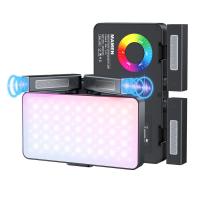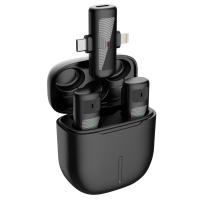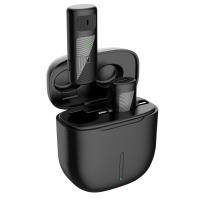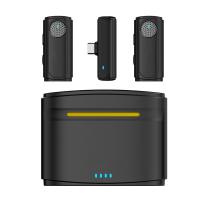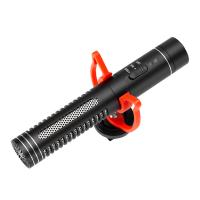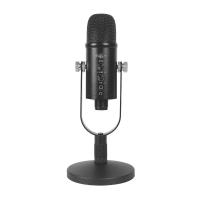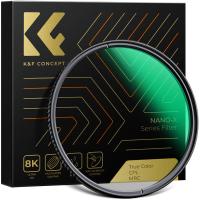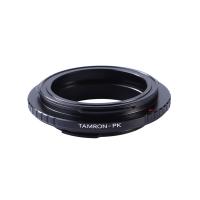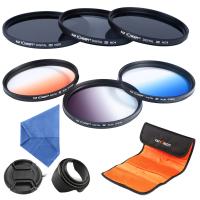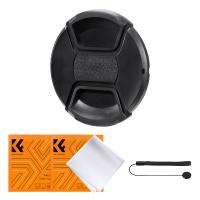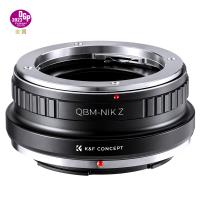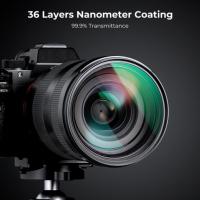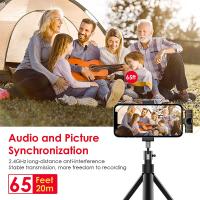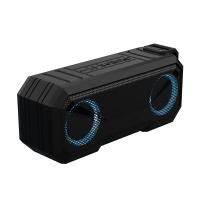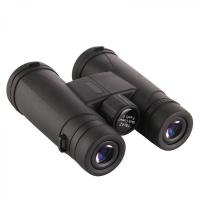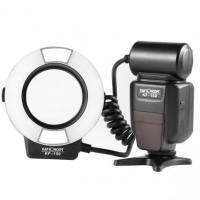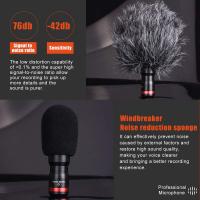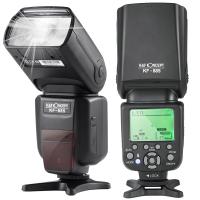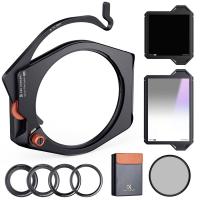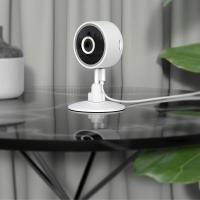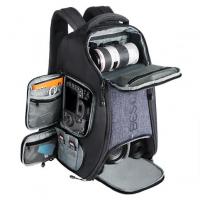Recording How To Get That Open Sound?
To achieve the "open sound" in your recordings, whether it's for vocals, instruments, or a full mix, involves a combination of technical know-how, equipment selection, and a thoughtful approach to both the recording environment and post-production. This sound is often described as clear, spacious, and transparent, where elements of the recording are crisp, with enough room for each part to breathe, making it feel like the music is "wide open." Below, we’ll explore various techniques and principles to help you achieve this open sound in your recordings.

1. Optimizing Your Recording Environment
The first step toward achieving an open sound is creating the right space. The acoustics of the recording environment will have a significant impact on how "open" your recording feels. Poor acoustics can make a recording sound muddy, boxed-in, or congested. Here are some key factors to consider:
Room Treatment
A room with hard surfaces can reflect sound in a way that causes unwanted resonances and muddiness. To avoid this, use acoustic treatment such as bass traps, diffusers, and absorptive panels. These treatments will reduce reflections and prevent the room from contributing too much color to the sound. Bass traps help manage low-frequency buildup, and diffusers can help scatter sound waves evenly throughout the room, creating a more balanced and natural listening experience.
Isolation
Ensure that instruments or vocals being recorded aren't bleeding into other microphones in the room. This is particularly important if you’re recording multiple sources simultaneously. For instance, if you're recording vocals while also capturing instruments, any bleed from the instruments into the vocal mic could cause muddiness and interfere with the clarity of your vocals. Use isolation shields or reflection filters to help minimize unwanted noise capture.
2. Choosing the Right Microphones
The choice of microphone can have a dramatic effect on how "open" a sound feels. Some microphones will naturally capture a more detailed, airy sound, while others may give you a more focused, intimate, or closed-in tone. Here are some guidelines:
Use of Condenser Microphones
Condenser microphones, especially large-diaphragm models, are known for capturing a broad frequency range with great sensitivity, which can contribute to a sense of openness. They tend to provide clear, detailed recordings and a wider frequency response compared to dynamic microphones, making them ideal for capturing vocals and instruments in a way that allows each element to feel distinct and present in the mix.
Microphone Placement
The positioning of your microphone plays a huge role in how open a recording sounds. For vocals, experiment with distance and angle to capture a natural, open sound. For instruments, experiment with mic placement to capture the instrument’s full tonal range, rather than focusing only on one spot. A common technique to achieve depth and openness in acoustic instruments is to place the microphone a few feet away from the sound source, capturing the room’s acoustics as well.
3. Capture Performance with Space
The way you record your performance is just as important as the equipment you use. A performance that feels tight, controlled, and deliberate will often contribute to a more "closed" sound. On the other hand, capturing performances that incorporate space, room ambiance, and natural nuances will help achieve that wide, open feel.
Layering and Panning
When recording multiple instruments or voices, don’t be afraid to layer and pan them across the stereo field. Creating space by panning instruments slightly left or right and giving each element its own place in the mix will prevent elements from competing for space in the center of the stereo field. This approach makes the mix sound wider and more open. For example, you might place a guitar slightly to the left and the bass slightly to the right, with vocals placed centrally.
Room Sound and Ambience
If possible, capture the natural room sound in your recordings. This can be achieved by using room microphones or overhead microphones that pick up the ambiance of the space. This allows for a more natural and expansive recording that can contribute to an open feeling. It’s important to strike a balance between isolating direct sounds and capturing the space around them.
4. EQ and High-Pass Filtering
When it comes to EQ, the goal is to create clarity and separation between instruments while leaving enough space for each element to breathe. A common mistake in mixing is overly boosting the bass or low-mids, which can lead to a "closed-in" sound. Instead, focus on creating space in the lower and middle frequencies for each instrument.
High-Pass Filtering
One of the easiest ways to create space is by applying high-pass filters to instruments that don’t need low-end frequencies. For example, on vocals or guitars, you can apply a high-pass filter around 80-100Hz to remove unnecessary low-end rumble. This helps to clean up the mix and leaves more room for the bass and kick drum.
Cutting, Not Boosting
Rather than boosting frequencies to make things stand out, consider cutting frequencies that are clashing or redundant. For example, if two instruments occupy similar frequency ranges, cutting one of their low mids can give both instruments more space, preventing them from overlapping and causing a muddy sound.
5. Reverb and Delay for Depth
Reverb and delay are powerful tools for creating a sense of space and openness in a mix. However, it’s crucial to use them tastefully. Too much reverb can cause things to sound distant or unclear, while too little can leave the recording feeling dry or "boxed-in."
Room Reverb
To create a sense of openness, use reverb that emulates a natural room sound. A well-designed room reverb plugin or a properly placed room mic can give your recording a sense of depth, making it feel as though the listener is inside the space rather than listening from outside. For vocals, a short, subtle reverb can give them a sense of presence and airiness without being too overwhelming.
Delay for Width
Delay is another great tool for creating space. You can use stereo delay to gently pan the delayed signal to either side of the stereo field, adding width and creating a more open atmosphere. Ensure that the delay times are synchronized with the tempo of the track for a natural sound. A subtle delay on guitars or background vocals can help them fill the stereo field without overcrowding the mix.
6. Compression Techniques
Compression is crucial to control dynamics, but over-compressing can lead to a squashed, lifeless sound that lacks openness. When aiming for an open sound, it’s essential to apply compression in a way that retains the natural dynamics of the performance.
Subtle Compression on Vocals and Instruments
For vocals, use gentle compression with a slow attack to retain the natural transients and preserve the open, airy quality of the voice. This will allow the more subtle nuances of the performance to come through, contributing to an open sound. Similarly, when compressing instruments like drums or guitars, aim for transparent compression that maintains the natural feel of the performance.
Parallel Compression
Another method for achieving openness while controlling dynamics is parallel compression. This involves mixing a heavily compressed version of the signal with the original, uncompressed signal. This allows you to maintain the natural dynamics of the performance while still controlling the peaks, leading to a fuller, more open sound.
7. Mixing for Openness
Once you've captured your performance with clarity and attention to detail, it's time to mix it. Here are a few key mixing tips to help you retain that open sound:
Balance and Panning
Properly balance the levels of each track and ensure that each instrument has its own place in the mix. Avoid cluttering the center with too many elements. Panning, as mentioned earlier, can help you create a sense of width and space by ensuring that different parts of the mix are spread across the stereo field.
Minimalism in Arrangement
Sometimes, less is more. Overcrowding the mix with too many instruments or layers can make it feel dense and closed. Aim to keep your arrangement simple and allow each element to breathe. Focus on what the song needs, not necessarily what you can add.
Achieving an open sound in your recordings requires a mix of proper environment setup, careful equipment choice, and precise techniques during the recording and mixing processes. From optimizing room acoustics and mic placement to controlling EQ and dynamics, every step contributes to the ultimate goal: clarity, space, and separation between elements. With these tools and methods, you’ll be able to achieve recordings that feel expansive, with each part having room to breathe and resonate in its own space. By thoughtfully balancing performance, technique, and production, you can create recordings that engage and captivate listeners with their openness and clarity.


